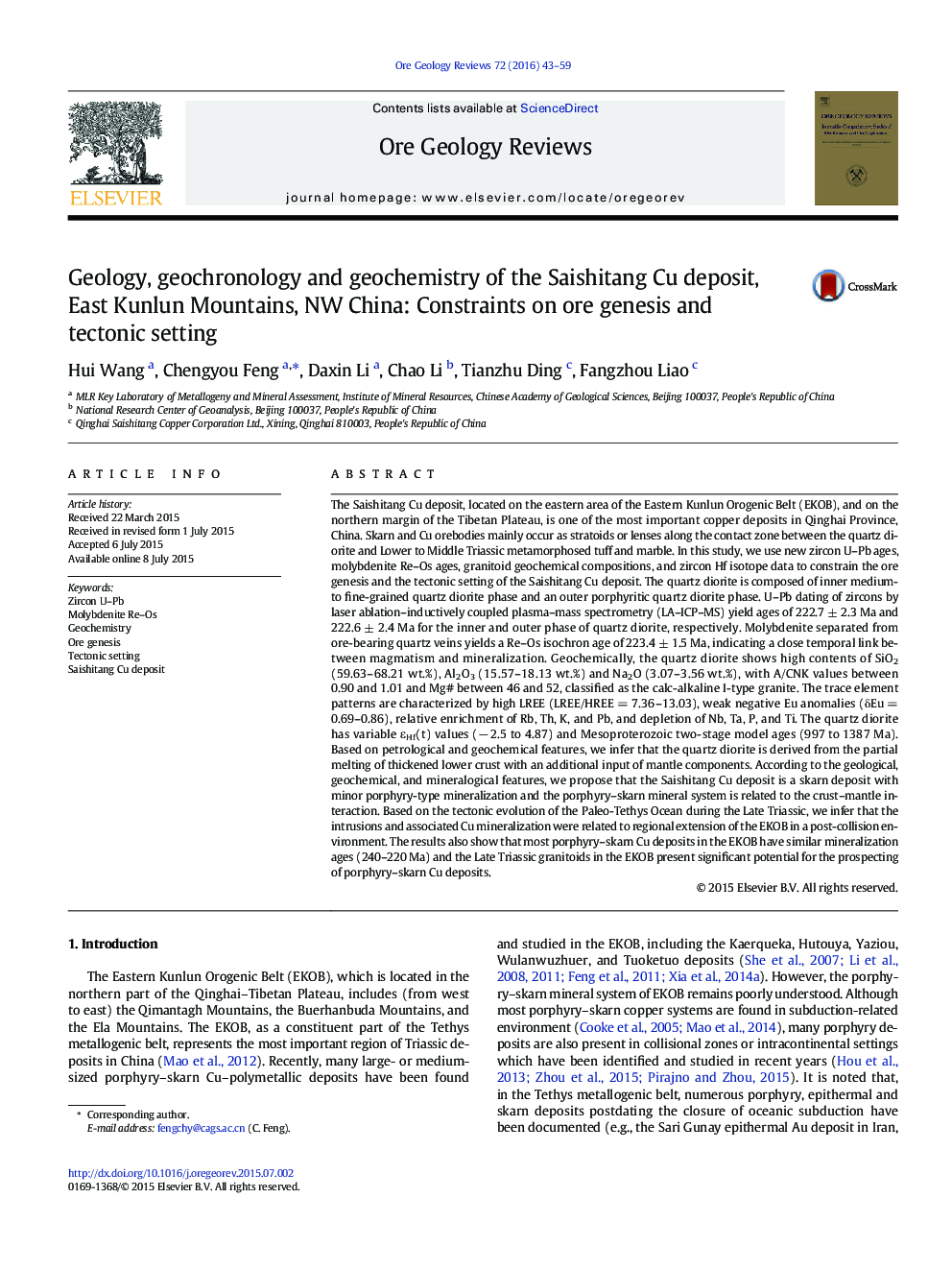| کد مقاله | کد نشریه | سال انتشار | مقاله انگلیسی | نسخه تمام متن |
|---|---|---|---|---|
| 6435719 | 1351852 | 2016 | 17 صفحه PDF | دانلود رایگان |

- Mineralization of Saishitang Cu deposit occurred in the Late Triassic (~Â 222Â Ma).
- The quartz diorite originated from lower crust with input of mantle components.
- The Saishitang porphyry-skarn mineral system is related to crust-mantle interaction.
- The Saishitang Cu deposit is formed in a post-collision environment.
The Saishitang Cu deposit, located on the eastern area of the Eastern Kunlun Orogenic Belt (EKOB), and on the northern margin of the Tibetan Plateau, is one of the most important copper deposits in Qinghai Province, China. Skarn and Cu orebodies mainly occur as stratoids or lenses along the contact zone between the quartz diorite and Lower to Middle Triassic metamorphosed tuff and marble. In this study, we use new zircon U-Pb ages, molybdenite Re-Os ages, granitoid geochemical compositions, and zircon Hf isotope data to constrain the ore genesis and the tectonic setting of the Saishitang Cu deposit. The quartz diorite is composed of inner medium- to fine-grained quartz diorite phase and an outer porphyritic quartz diorite phase. U-Pb dating of zircons by laser ablation-inductively coupled plasma-mass spectrometry (LA-ICP-MS) yield ages of 222.7 ± 2.3 Ma and 222.6 ± 2.4 Ma for the inner and outer phase of quartz diorite, respectively. Molybdenite separated from ore-bearing quartz veins yields a Re-Os isochron age of 223.4 ± 1.5 Ma, indicating a close temporal link between magmatism and mineralization. Geochemically, the quartz diorite shows high contents of SiO2 (59.63-68.21 wt.%), Al2O3 (15.57-18.13 wt.%) and Na2O (3.07-3.56 wt.%), with A/CNK values between 0.90 and 1.01 and Mg# between 46 and 52, classified as the calc-alkaline I-type granite. The trace element patterns are characterized by high LREE (LREE/HREE = 7.36-13.03), weak negative Eu anomalies (δEu = 0.69-0.86), relative enrichment of Rb, Th, K, and Pb, and depletion of Nb, Ta, P, and Ti. The quartz diorite has variable εHf(t) values (â 2.5 to 4.87) and Mesoproterozoic two-stage model ages (997 to 1387 Ma). Based on petrological and geochemical features, we infer that the quartz diorite is derived from the partial melting of thickened lower crust with an additional input of mantle components. According to the geological, geochemical, and mineralogical features, we propose that the Saishitang Cu deposit is a skarn deposit with minor porphyry-type mineralization and the porphyry-skarn mineral system is related to the crust-mantle interaction. Based on the tectonic evolution of the Paleo-Tethys Ocean during the Late Triassic, we infer that the intrusions and associated Cu mineralization were related to regional extension of the EKOB in a post-collision environment. The results also show that most porphyry-skarn Cu deposits in the EKOB have similar mineralization ages (240-220 Ma) and the Late Triassic granitoids in the EKOB present significant potential for the prospecting of porphyry-skarn Cu deposits.
Journal: Ore Geology Reviews - Volume 72, Part 1, January 2016, Pages 43-59